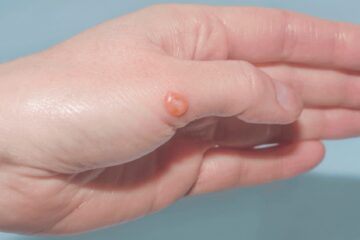Have you noticed that your child’s teeth are not as straight as you’d expect? You’re not alone. Many parents face this concern and wonder what steps to take next.
This guide is designed to help you understand the different types of crooked teeth in children. We’ll cover everything from common types to possible solutions, ensuring you have all the information you need to support your child’s dental health.
Common Causes of Crooked Teeth
Crooked teeth in children can be caused by a variety of factors. It’s important to consult with your child’s dentist to determine the exact cause of their crooked teeth.
Genetics Play a Role
Genetics often dictate whether your child will have straight or crooked teeth. If you or other family members had braces, your child might also need them. Genetic factors can influence jaw size, tooth crowding, and alignment.
Habits That Contribute
Certain habits can contribute to crooked teeth. Thumb sucking, prolonged use of pacifiers, and even tongue thrusting can push teeth out of alignment. These habits are often harmless in infancy but can cause issues if they persist as teeth develop.
Early Tooth Loss
Losing baby teeth too early can also lead to crooked teeth. When a tooth is missing, adjacent teeth may shift into the space, causing misalignment. Regular dental visits can help manage these situations effectively.
Types of Crooked Teeth in Children
There are different types of crooked teeth that your child may experience. Here are the most common ones.
Overcrowding
Overcrowding is one of the most common types of crooked teeth in children. It occurs when there isn’t enough space in the mouth for all the teeth to fit properly. This can cause teeth to overlap or twist.
Overcrowding often requires orthodontic treatment to correct.
Gapped Teeth
Gapped teeth happen when there’s too much space between two teeth. This can be due to various reasons, including missing teeth or a discrepancy in tooth and jaw size. While some gaps are minor and purely aesthetic, others may need orthodontic treatment.
Overbite
An overbite happens when the upper front teeth extend over the lower front teeth too much. This condition can cause wear on the teeth and even jaw pain. It’s often corrected with braces or other orthodontic appliances.
Underbite
An underbite is when the lower front teeth extend beyond the upper front teeth. This can affect chewing and speaking. Early intervention is crucial for treating an underbite effectively.
Crossbite
A crossbite happens when some upper teeth sit inside the lower teeth when biting down. This misalignment can affect both the front and sides of the mouth. Crossbites can lead to uneven wear on the teeth and jaw problems if not treated.
Open Bite
An open bite is when the upper and lower teeth don’t meet when the mouth is closed. This can make chewing difficult and lead to speech issues. Orthodontic treatment is often needed to close the bite.
Diagnosing Crooked Teeth
If you suspect your child has crooked teeth, a visit to the dentist is recommended. They can then determine the best course of action for correcting any issues.
Dental Exams
Regular dental exams are the first step in diagnosing crooked teeth. Your child’s dentist will examine their teeth and may take X-rays to get a clearer picture of the alignment. These exams are crucial for spotting issues early.
Orthodontic Consultation
If your dentist notices alignment issues, they may refer you to an orthodontist. Orthodontists specialize in diagnosing and treating crooked teeth and misaligned jaws. An orthodontic consultation will provide a detailed treatment plan tailored to your child’s needs.
Imaging Techniques
Advanced imaging techniques like 3D scans can offer a more detailed view of your child’s teeth and jaw. These images help in planning precise and effective treatments. They are especially useful for complex cases requiring surgical intervention.
Treatment Options
The most common treatment options for crooked teeth in children are braces and orthodontic appliances. The type of treatment recommended will depend on the type and severity of your child’s crooked teeth.
Braces
Braces are the most common treatment for crooked teeth. They apply continuous pressure to move teeth into the desired position. Modern braces come in various types, including metal, ceramic, and lingual, making them suitable for different needs and preferences.
Clear Aligners
Clear aligners like Invisalign are a popular alternative to traditional braces. They are nearly invisible and can be removed for eating and cleaning. However, clear aligners are usually recommended for less severe cases of crooked teeth.
Retainers
Retainers are often used after braces to maintain the new position of the teeth. They can also be used for minor corrections. Wearing a retainer as instructed by the orthodontist is crucial for lasting results.
The Role of Surgery
In severe cases, orthodontic surgery may be required to correct misaligned jaws and teeth. Surgical procedures can reposition the jaw, making it easier to align the teeth. This option is typically considered only when other treatments are insufficient.
Preventive Measures
While genetics play a significant role in the development of crooked teeth, some preventive measures can help reduce the risk.
Regular Dental Check-Ups
Regular family dental care check-ups are essential for maintaining oral health and preventing crooked teeth. These visits allow the dentist to monitor your child’s teeth and catch any issues early. Early detection can often prevent more severe problems.
Proper Oral Hygiene
Good oral hygiene practices can help prevent many dental issues, including crooked teeth. Encourage your child to brush and floss regularly. Proper oral care reduces the risk of cavities and gum disease, which can contribute to misalignment.
Addressing Habits Early
Addressing habits like thumb sucking and pacifier use early can prevent them from affecting your child’s teeth. Consult your dentist for advice on how to manage these habits effectively. Sometimes, simple behavioral changes can make a big difference.
Understand the Different Types of Crooked Teeth in Children
Crooked teeth in children are common and treatable. Early diagnosis and intervention can prevent complications. Regular dental visits, good oral hygiene, and addressing habits like thumb sucking are key preventive steps.
Understand the types of crooked teeth and their causes to make informed decisions. Treatments like braces, aligners, and retainers are effective. In some cases, surgery may be needed.
Consult a dentist or orthodontist for a personalized treatment plan. Ensure your child’s smile and oral health with the right approach.
Have a thirst for knowledge? Visit our blog to discover a plethora of articles on diverse subjects. Enjoy your reading!




